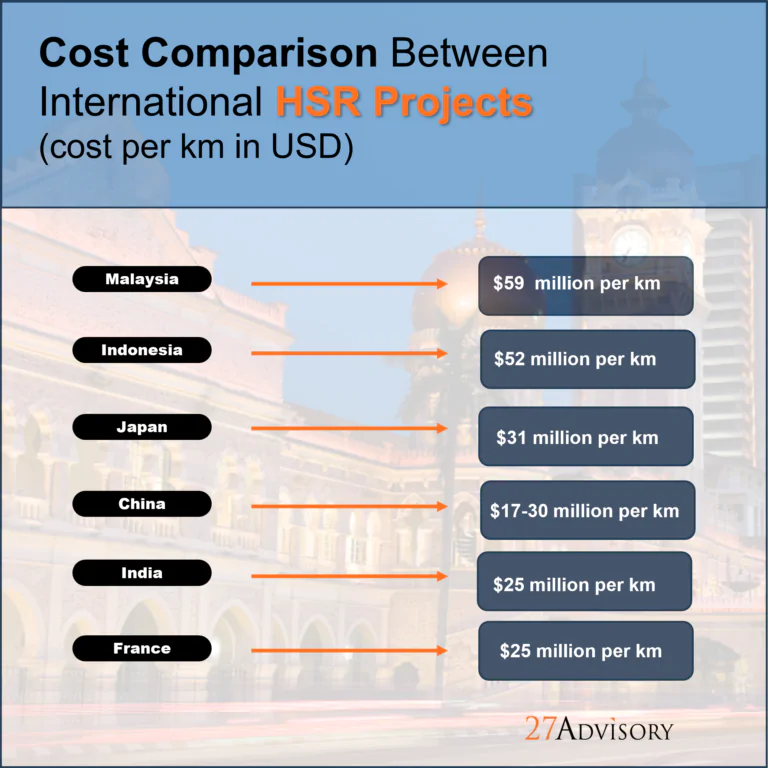
While the potential economic and socioeconomic benefits of the KLHSR Project are undoubtedly promising, several key risks remain associated with its development. These mainly centre around the project’s cost and ability to attract long-term returns to justify its development.
As per the recently released Request for Information notice by MyHSR Corp, the newly proposed KLSHSR Project is intended to be delivered as a Public-Private Sector Partnership engagement. In a PPP initiative, the government partially finances the project and manages concerns, including land acquisition, facilitation of regulatory approvals, and granting incentives such as tax breaks and credit guarantees. On the other hand, the private sector finances the construction and handles the risks involved in execution. On balance, the greater risk in PPP arrangements is shouldered by the government, which is responsible for ensuring that the project is carried out effectively and operates successfully.
The newly proposed KL-Singapore High-Speed Rail Project has a projected financial cost of RM 100 billion. This constitutes nearly 25% of the proposed Malaysian budget for 2024 and is equivalent to the country’s total budget allocation for development in 2024. Large-scale infrastructure projects of this type can face unforeseen challenges in the construction phase, as evidenced by the Indonesian HSR project, which was completed for US$8 billion in contrast with its initial US$5.5 billion projected cost.

While its potential advantages remain attractive, governments and private sector stakeholders should be cautious in committing resources to its development, particularly in light of the challenges faced in executing the original project. The Malaysian government, in particular, should be prudent with regard to committing expenditures and demonstrate how ridership levels can be achieved to meet the long-term financial targets of the KL-Singapore HSR.
Related articles:
Article 1: The Original Concept for the KLHSR
Article 2: The Original Project Delivery Structure for the KLHSR















